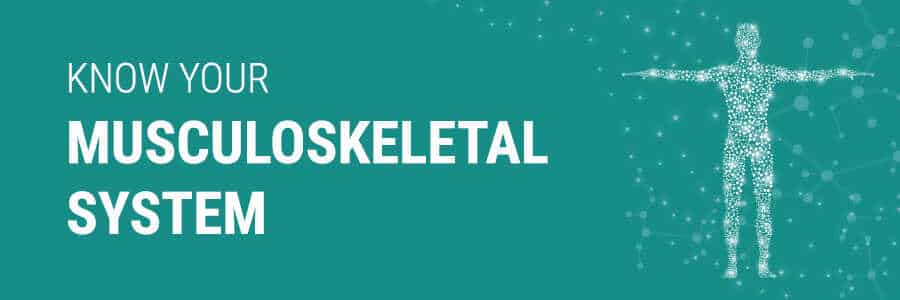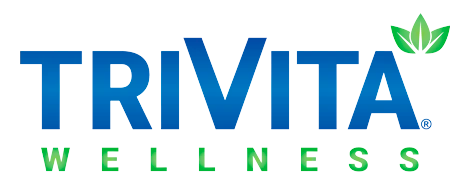
The System functions:
There are three main types of muscle, including cardiac, smooth and skeletal.

Cardiac muscles are involuntary muscles known as myocardium that is found in the heart wall used to contract the heart causing heartbeat and visceral.
Smooth muscle lining which is another form of involuntary muscle primarily located in the digestive system designed to move food through the digestive and urinary tract as well as the arteries and veins.
Skeletal muscles are voluntary muscles and work with the connective tissues which enable the body to move. The skeletal structure consists of bones, cartilage, ligaments designed to provide structure for the body, protection for delicate tissues, and organs and joints of the skeletal system.
Its primary role is in the storage of calcium, maintain pH balance and produce red blood cells to the body.
Associated organs:
Bones and muscles, tendons, ligaments, cartilage, synovial
What you can do to help support a healthy Musculoskeletal System:
Recommended Dietary Supplements: Bone Growth Factor, Essential D, Joint Complex, MyoHealth Essential Amino Acid Complex, Nopalea,
Essential Vitamins & Minerals: Calcium, Potassium, Protein, Vitamin C, Iron, Thiamin, Magnesium, Sodium and Iodine.

Foods to include:
Fruits
Oranges, Pineapple, Tomato, Papaya, Banana, Strawberries
Vegetables
Collard Greens, Broccoli, Brussels Sprouts, Artichokes, Red/Green Peppers, Kale
Protein
Wild-Caught Fish, Grass-Fed Lean Beef/Bison, Free-Range Chicken/Turkey Breast, Lean Pork, Tofu
Dairy
Eggs, Cottage Cheese, Grass-Fed Whole Milk, 2% Greek Yogurt, Aged Cheese, Butter, Kefir
Nut & Seeds
Almonds, Walnuts, Pumpkin Seeds, Chia Seeds, Pistachios
NOTE:
Be sure to do your best to shop organic, grass-fed, free-range, unprocessed and low sodium.
Daily morning cleanse: 8-12oz of lemon water.
Foods you should avoid or limit:
Do your best to read the labels on packaged food. If the names are too hard to pronounce, they are likely chemical based ingredients and not very good for you.
- Processed and high-sodium foods such as cured ham, bacon, sausage
and potatochips . - Foods that contain all-purpose flour such as pizza, bagels, pretzels, white bread, and flour tortillas.
- Foods containing artificial sweeteners like Sucralose such as yogurt, cereal, whole grain muffins
and bread and microwave popcorn. - Beware of “reduced sugar” labels which are usually loaded with artificial sweeteners such as fruit juice, ketchup, jams, jelly, syrup, soda, sports drinks, ice cream and salad dressings.
Artificial sweeteners you should try to avoid:
Aspartame, Acesulfame potassium, Alitame, Cyclamate, Dulcin, Equal, Glucin, Kaltame, Mogrosides, Neotame, NutraSweet, Nutrinova, Phenylalanine, Saccharin, Splenda, Sorbitol, Sucralose, Twinsweet, Sweet ‘N Low, Xylitol
Recommended activities:
Physical activity is essential for good health. New studies show even 15 minutes of elevated heart rate from activity has numerous benefits. Find activities you enjoy doing and aim for at least 15 minutes 4 to 5 times per week.
- CARDIO: Biking, Hiking, Walking, Running, Swimming and Dancing
- STRENGTH: Weight Training, Resistance Training and Pilates
- FLEXIBILITY: Yoga, Tai-Chi and Stretching

Additional information:
Common Symptoms:
Common signs and symptoms associated with the Musculoskeletal System include aches, pain, gout, osteoarthritis, rheumatoid arthritis, tendonitis, stiff and painful joints, cramps, spasms, bone infections, fibromyalgia, swelling, and tightness causing nerve pressure leading to carpal, cubital and tarsal tunnel syndromes.
Common Disorders:
- Bunion – A deformity of the joint connecting the big toe to the foot.
- Degenerative Disk Disease – Osteoarthritis of the spine usually in the neck or lower back that can lead to facet joint impingement and muscle spasm and pain.
- Gout – A form of arthritis characterized by soreness and reddening of the big toe joint or foot.
- Hammer Toe – A deformity of the toes characterized by an abnormal bend in the middle of the joint.
Hernia – Development of a bulging lump in the groin or abdominal wall.- Herniated/Ruptured disk – A condition which refers to a problem with the rubbery disks between spinal bones that can cause nerve root impingement and radicular pain and spasm.
- History of broken bones – This can be the result of injury, fall or thinning of bones.
- Osteoarthritis – A type of arthritis that occurs gradually causing wear and tear of joints.
- Osteoporosis – A condition in which bones become weak and brittle due to bone calcium loss that can lead to fractures.
- Plantar Fasciitis – Inflammation of the thick tissue band that connects the heel bone to the toes causing pain in the heel or bottom of the foot.
- Psoriatic Arthritis – A form of arthritis that affects some people who have the skin condition psoriasis.
- Restless Leg Syndrome – A condition that is characterized by leg irritability usually occurring at night and often interferes with sleep.
- Rheumatoid Arthritis – An autoimmune disease often affecting joints leading to bony destruction at later or untreated stages.
- Systemic Lupus Erythematous – An autoimmune disorder that affects the entire system by attacking its own tissues.
- Teeth Grinding – The grinding teeth when sleeping or during the day.
- Tendonitis – A condition in which the tissues connecting muscle to the bone becomes inflamed. This can occur medially (golfers elbow) or laterally (tennis elbow) and can be noticed in excessive arm/elbow use.
- TMJ – Chronic pain of the jaw joint and surrounding muscles with movement.
Download:
You can download a copy of the Musculoskeletal System information found on this page to keep for your

